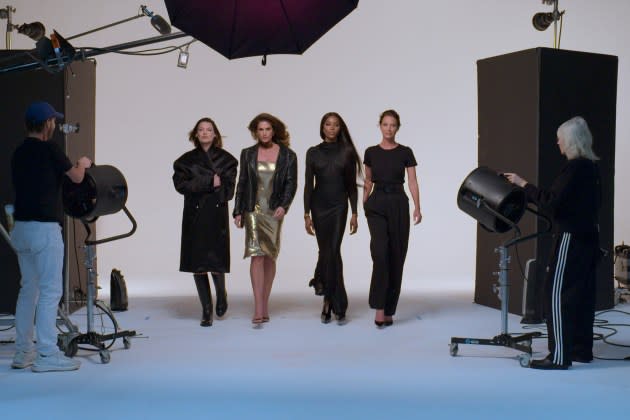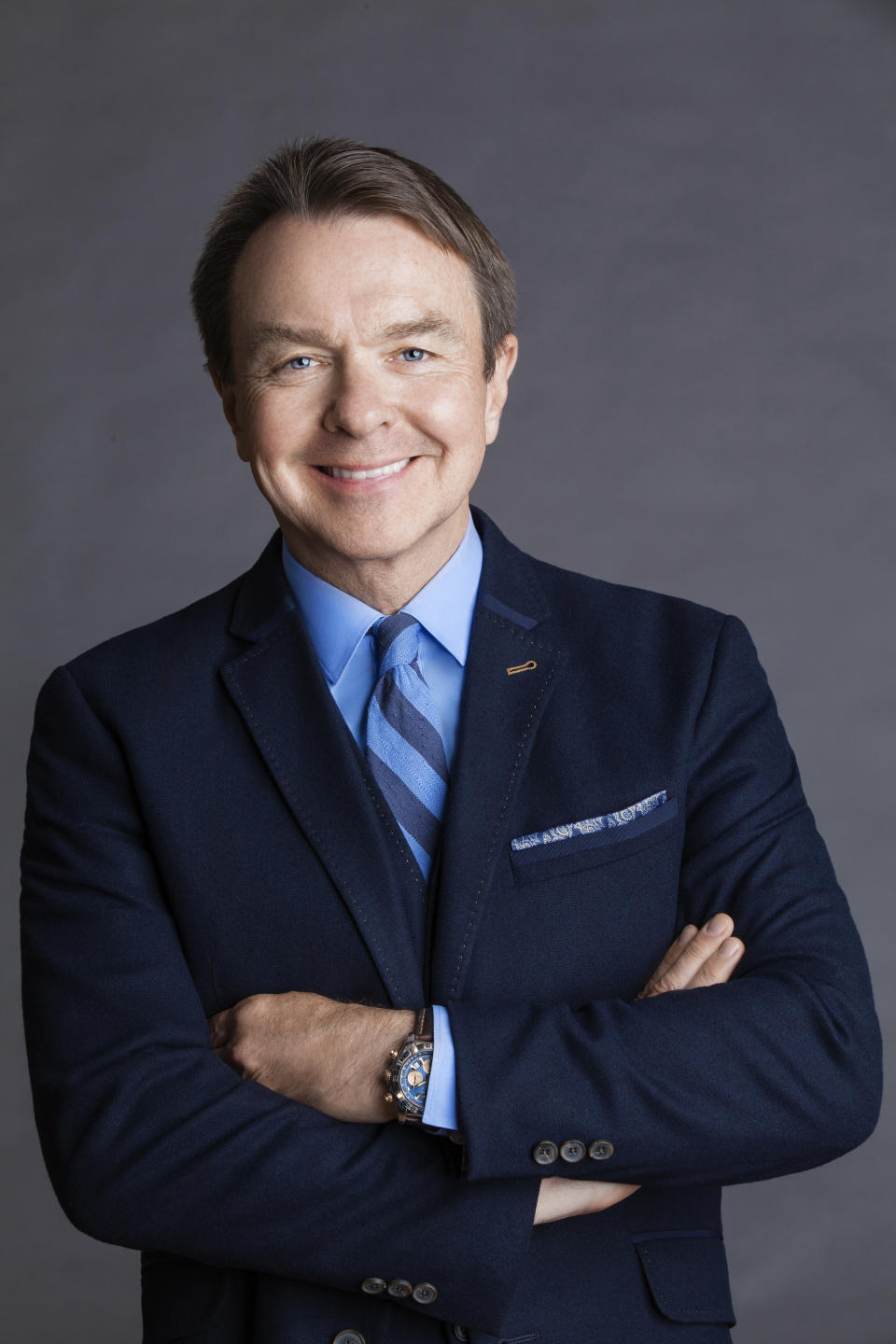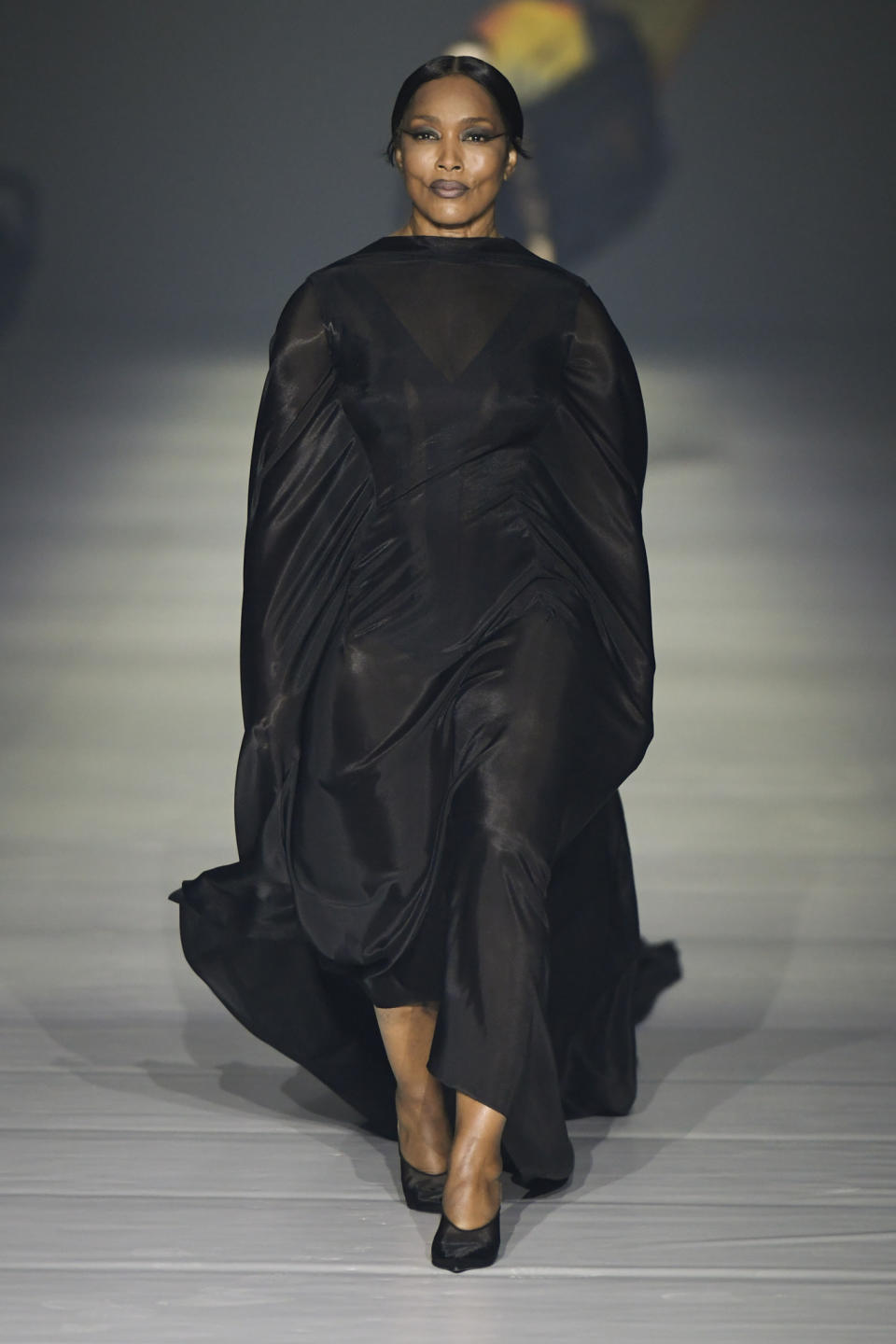Roar Forward’s Michael Clinton Talks 100-year Lives, Longevity, Re-imagineers and Missed Marketing Opportunities
- Oops!Something went wrong.Please try again later.

Do not go gently into that good night.
Poetry aside, that is essentially what Roar Forward founder Michael Clinton wants consumers to abide by once they reach the 50-year mark. And many brands, advertisers and marketers are missing out on this sector’s spending might by not connecting with them in a true-to-life and relatable way, he said.
More from WWD
Before addressing a crowd of 700 at the Association of National Advertisers in Las Vegas, Clinton discussed how the stereotypical “wind-down” retirement plans are outdated, and many marketers have been slow to capitalize on this new reality. Recognizing that the second half of life is changing dramatically, he defined some of that keep living, working, exercising, spending ethos in the 2020 book “Roar: Into the Second Half of Your Life (Before It’s Too Late).” Living to 90 or beyond is in reach for those currently 50-plus, who are healthy and are taking care of themselves and have created what he called “a whole new life script,” as in work longer, start a new career, compete in masters’ sports or launch a business.
Needless to say, Clinton practices what he preaches. His 40-year publishing career involved such milestones as having a hand in launching Oprah Winfrey’s magazine and Hearst acquiring Hachette, and he still serves as a media adviser to Hearst. Having joined the board of the Stanford University’s Center on Longevity last year, Clinton referred to its just-out “New Map of Life” report that spells out how the 100-year life is here,” and he said centennials will become more and more normalized for the next generation. Sixty-year careers are also to be expected.
“Fifty to 90 or 100 is a lot of living. We used to say that you work until 60 or 65, then you retire and quote ‘play golf’ and then you’re gone. That script was written for us in the 1930s, when the life expectancy was 62 and Social Security was born,” he said. “Now the life expectancy is just under 80 and it continues to grow.”

Should anyone need convincing, Clinton noted one-third of the U.S. population is over the age of 50 and the first Millennials will turn 50 in 2030. More importantly, the over-50 crowd has more than $8.3 trillion in spending power, a sum that would make them one of the largest countries in the world based on GDP. In addition, more than 70 percent of all assets, or about $92 trillion worth, are owned by people who are 50-plus.
“This is a powerful economic group, but more importantly their attitudes, behaviors and lifestyles are all dramatically different than past generations.”
The way he sees it, the people older than 50 are ahead of the institutions and companies in recognizing how second-half living has shifted. “They’re going to force change around them. One of those things will be to blow up the stereotypical representation of who they are as a group,” Clinton said.
Pointing to the lead actresses in “Sex and the City,” Jennifer Lopez, Halle Barry and Sharon Stone as examples of what 50-plus can look like, Clinton also noted that marketers are majorly missing out on creating relatable campaigns. Interestingly, men’s advertising is more open to the prospect, as evidenced by Canali and Kith ads. Cultural cues can be seen in Vogue’s September cover with supermodels Cindy Crawford, Naomi Campbell, Christy Turlington and Linda Evangelista (although the magazine saw major blowback from consumers over how extensively the models were Photoshopped), as well as Patti Smith and Martha Stewart each landing a cover on Harper’s Bazaar and Sports Illustrated’s swimsuit issue, respectively.
Entertainment executives are waking up to the demographic too. Cue ABC’s “The Golden Bachelor,” Netflix’s “Blue Zones” and the new Hollywood studio MRC’s Landline Pictures, which will only produce romantic comedies featuring actors and actresses 50 and older to appeal to that same age group. Mentioning how Renée Zellweger recently signed up for a film, Clinton joked, “Shock — people over 50 want romance — what a concept, right?”
These “Re-Imagineers” have sparked Roar’s evolution. Last year, the Roar Forward business was launched through a joint venture with Hearst Ventures, an investment arm that supports small businesses. It’s primarily a B2B operation designed to guide C-suite executives with their longevity strategies from both a consumer and employee standpoint, as well as offers focus groups and other insights. For the first time, a half-day summit “Roar Forward: Reimagine the Second Half of Life” will be held on Nov. 9 at the Hearst Tower for a crowd of 150. L’Oréal and the Annenberg Foundation are among the sponsors.
Today there are very few people over 50 around the creative table to say, ‘Wait a minute, this is what over 50 can look like.’”
Michael Clinton
The living-longer phenomenon is happening in Japan, the U.K., Germany, Italy, China and all of the developed populations around the globe and with that comes bigger spending power, he said. “There is so much focus on the youth market and not enough focus on what’s happening with the 50-plus market,” Clinton said.
Roar recently released a national study of consumers in the 50 to 70 age range. One takeaway was the misconception that brand loyalty is a given, with some respondents stating they walked away from brands that did not represent them. Conversely, one in two said they tended to shop from brands that authentically represented them, Clinton said.
The lack of modern representation in marketing and advertising is another detriment. Think active, dynamic, tech-savvy, contemporary images. Making the point that fashion in general rarely features models older than 30, Clinton praised the beauty industry for being better at that and cited L’Oréal having Helen Mirren walk its runway during Paris Fashion Week as an example. “But overall, the fashion industry and the retail industry writ large are missing this amazing consumer, who is over 50,” he said. “I would argue that those consumers are no longer brand loyal and they will leave.”
Hoka, Tesla, Caddis and Apple Watch are some of the brands that are benefiting from this group’s spending, Clinton said. Contrary to many companies’ view that health care is their largest spend, survey respondents ranked travel, health and wellness, and fashion, apparel and accessories as the three top categories, respectively.
As for the disconnect in terms of imagery, copy and narratives, Clinton said, “We found that the majority of people around the creative team are young professionals. What happens is there’s a default to younger images. It reminds me of the days when a bunch of men used to sit around the table and create advertising for women. Today there are very few people over 50 around the creative table to say, ‘Wait a minute, this is what over 50 can look like.’”

To help shepherd companies there, Roar has identified a “Re-Imagineer” cohort on the Hearst database and advertisers can now target them through a quarterly and a bulletin that were introduced earlier this year. Another indicator of consumers’ interest in life’s second act is the popularity of the book “Outlive: The Science and Art of Longevity.” Biohacking isn’t just being driven by Silicon Valley, including Bryan Johnson, but also by medical institutions. Indicative of that interest, Women’s Health magazine featured the septuagenarian fitness specialist Joan Macdonald (whose Instagram base is 1.8 million) as one its October cover models.
“We’re pushing boundaries and the Re-Imagineers are the frontrunners to this social movement. There were women, who were frontrunners in the women’s movement, who changed perceptions, roles and role models not only for their peers, but for the women, who came after them. It was the same with the LGBTQ community. And these frontrunners are the age innovators, who are redefining the second-half of their careers.”
Clinton believes there is a lot of ageism embedded in our culture, but that is going to change and it is “fomenting.” He added, “I think you will see more people taking it on and busting it up because ageism is like sexism. It has to be surfaced before it can be changed. Obviously, it never completely goes away. But how do you put it on the frontburner to say that’s an ageist stereotype or an ageist statement? I think that is also going to change.”
Clinton’s athetic pursuits rival his professional accomplishments. A 15-time marathoner, his summer break called for a nine-day trek to the Mount Everest base camp and he then ran 26.2 miles down, which is better known as the Tenzing-Hillary Everest Marathon. The descent wasn’t exactly simply that, given the cragginess of the terrain — rocks, boulders and cliffs — and the peaks and valleys of the mountain. “It was epic and life-affirming. The night before at base camp it was freezing, we had altitude sickness and were hearing avalanches off in the distance,” he recalled with a laugh. “Then you say to yourself, ‘And I’ve got to get up tomorrow morning and run a marathon.’”
As for the incentive, Clinton said, “This is what I did to celebrate turning 70.”
He continued, “My message is that you can’t be it unless you see it. People can say, ‘That’s pretty amazing that you did that.’ I’m like, ‘You don’t have to do that, but you can do that.’”
Best of WWD

